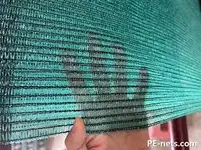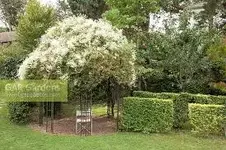Mr_Yan
Active member
- Location
- West Michigan
- Hardiness zone
- 6a
So I'm in the early stages of design on this one but looking for ideas.
The patio I am building will be along the south side of my house without any shade trees to cover it. Come July and August this won't be a patio so much as a griddle in the afternoon which would be a waste. For this I am planning on building a pergola or arbor over the seating area for the patio. I plan on having an open top rather than a solid roof on it but will probably do some type of curtain for the first few years.
I would like to train some vines up and across the top of this in addition to the other landscaping I will put around it. What vines could anyone suggest?
I'm in a moderate winter area, we tend not to get too cold but do average 80 or so inches of snow a season.
Grape is the first that comes to mind. I'd let it run kind of out of control and take over the upper flat top of the pergola. My guess is it would only require a few hours a year of hacking back pruning maintenance. By also letting it run out of control I don't expect to get fruit from it which is a concern as grapes can be very toxic to dogs.
Virginia Creeper does come to mind but I don't think I want the sucker gripper anchors biting into the wood of the arbor.
Wisteria could possibly be an option but I've never seen it spread and create a mat like grape can. I've always seen it in photos either trained out in an orderly border or having completely climbed and choked out a tree.
The patio I am building will be along the south side of my house without any shade trees to cover it. Come July and August this won't be a patio so much as a griddle in the afternoon which would be a waste. For this I am planning on building a pergola or arbor over the seating area for the patio. I plan on having an open top rather than a solid roof on it but will probably do some type of curtain for the first few years.
I would like to train some vines up and across the top of this in addition to the other landscaping I will put around it. What vines could anyone suggest?
I'm in a moderate winter area, we tend not to get too cold but do average 80 or so inches of snow a season.
Grape is the first that comes to mind. I'd let it run kind of out of control and take over the upper flat top of the pergola. My guess is it would only require a few hours a year of hacking back pruning maintenance. By also letting it run out of control I don't expect to get fruit from it which is a concern as grapes can be very toxic to dogs.
Virginia Creeper does come to mind but I don't think I want the sucker gripper anchors biting into the wood of the arbor.
Wisteria could possibly be an option but I've never seen it spread and create a mat like grape can. I've always seen it in photos either trained out in an orderly border or having completely climbed and choked out a tree.



